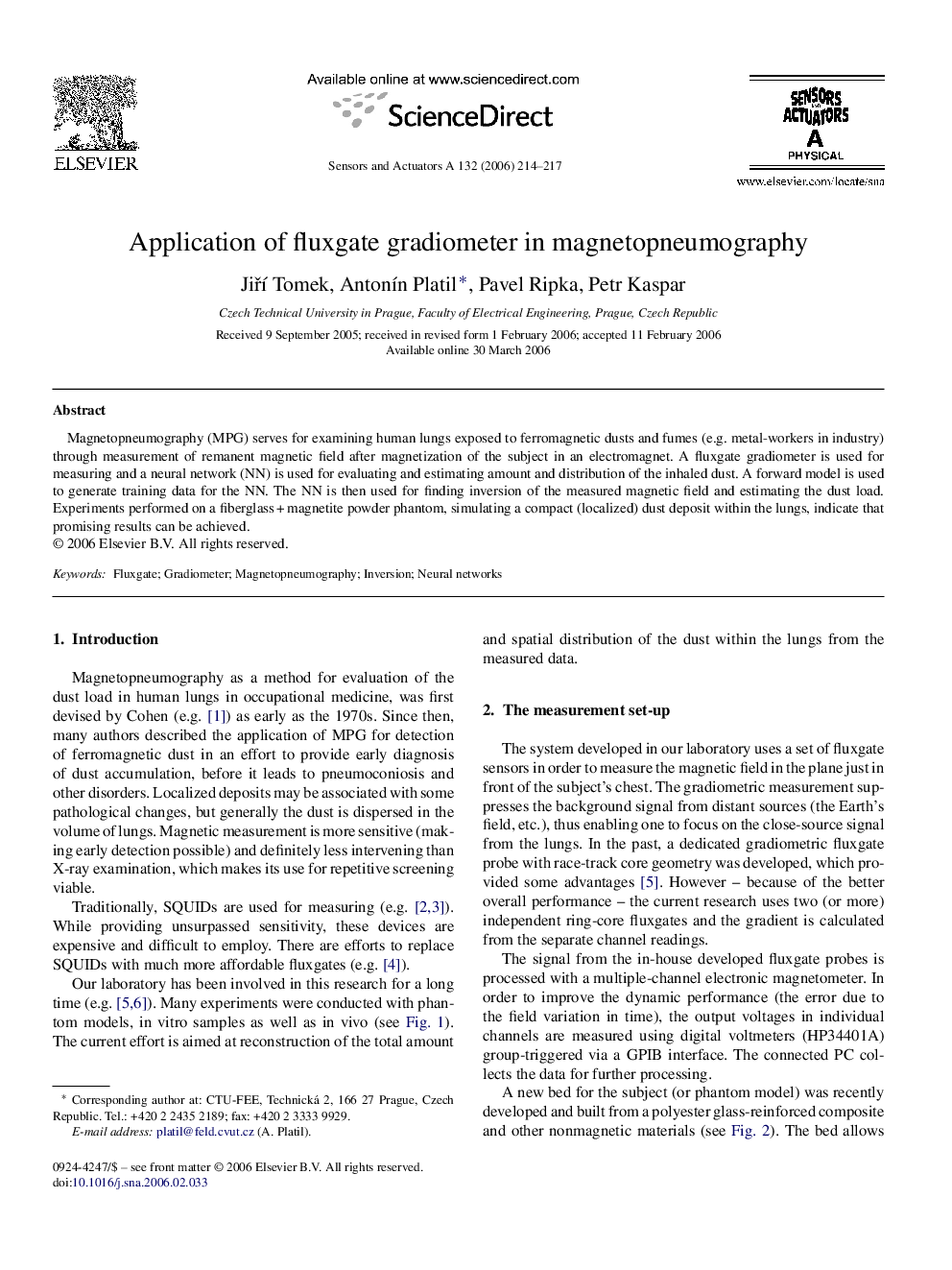| Article ID | Journal | Published Year | Pages | File Type |
|---|---|---|---|---|
| 740607 | Sensors and Actuators A: Physical | 2006 | 4 Pages |
Abstract
Magnetopneumography (MPG) serves for examining human lungs exposed to ferromagnetic dusts and fumes (e.g. metal-workers in industry) through measurement of remanent magnetic field after magnetization of the subject in an electromagnet. A fluxgate gradiometer is used for measuring and a neural network (NN) is used for evaluating and estimating amount and distribution of the inhaled dust. A forward model is used to generate training data for the NN. The NN is then used for finding inversion of the measured magnetic field and estimating the dust load. Experiments performed on a fiberglass + magnetite powder phantom, simulating a compact (localized) dust deposit within the lungs, indicate that promising results can be achieved.
Related Topics
Physical Sciences and Engineering
Chemistry
Electrochemistry
Authors
Jiří Tomek, Antonín Platil, Pavel Ripka, Petr Kaspar,
